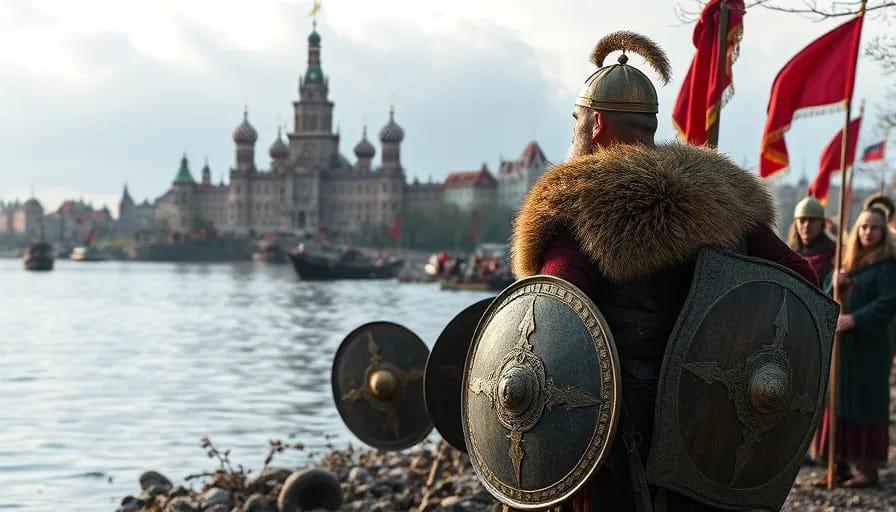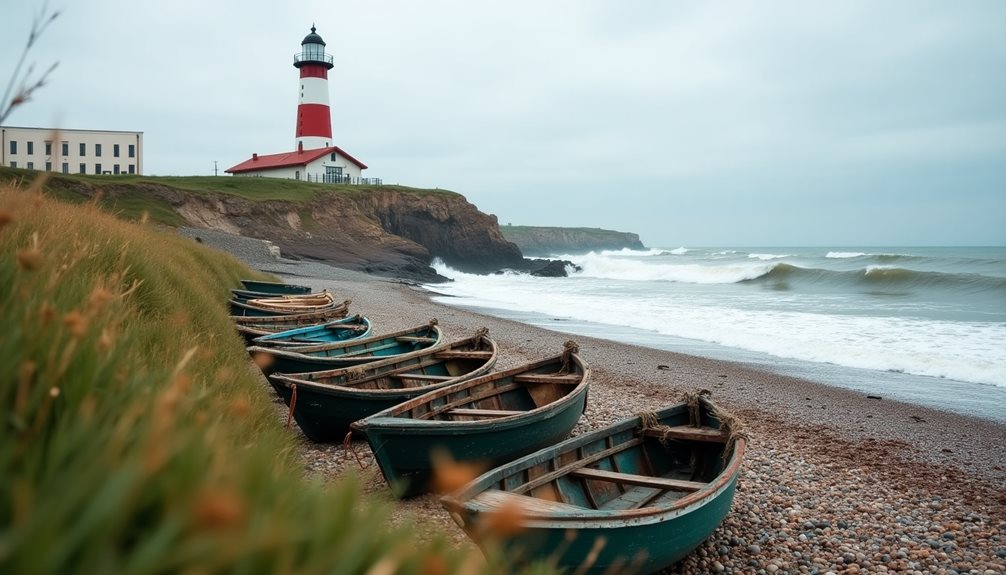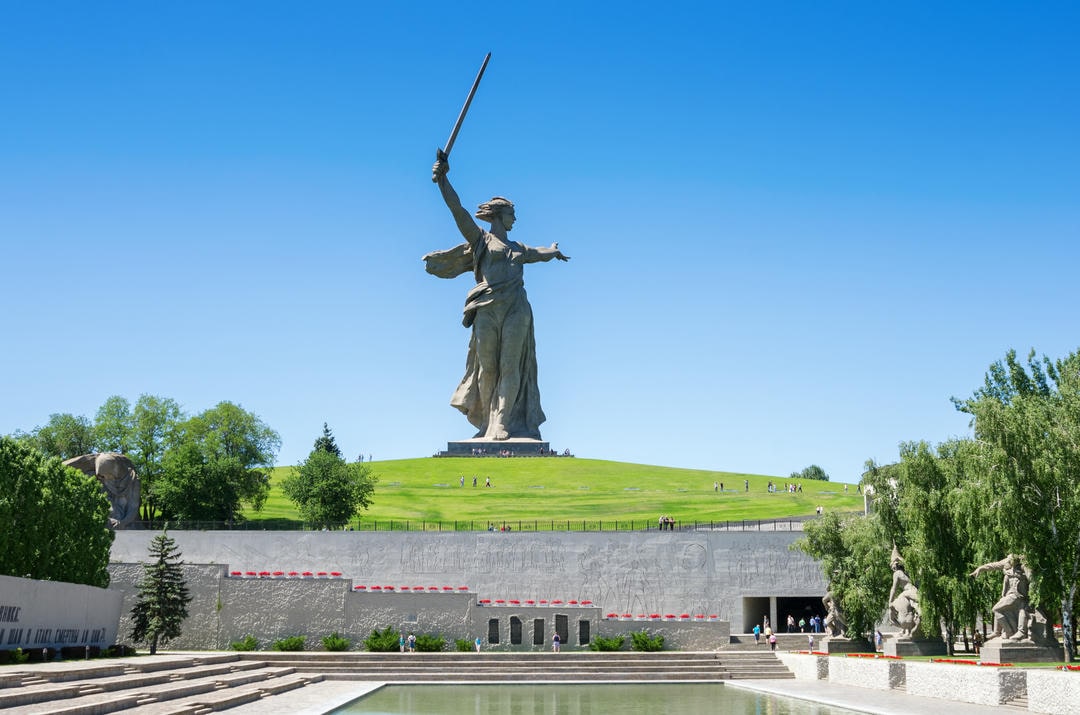
The year 862 marked a pivotal moment in Eastern European history, as the Varangian chieftain Rurik and his successor Prince Oleg set in motion the unification of the Eastern Slavic tribes under a single rule. This marked the emergence of the Kievan Rus’, a loose confederation of tribes that would eventually give rise to the modern Russian state. However, the process of unification was far from straightforward, and the early years of the Kievan Rus’ were marked by conquest, power struggles, and cultural exchange. What factors contributed to the success of Rurik and Oleg’s endeavors, and how did they shape the course of Russian history?
The Varangians’ Early Presence
Amidst the vast expanses of Eastern Europe, a group of Norse seafarers and warriors known as the Varangians made their presence felt in the early medieval period. Emerging from Scandinavia, they began to establish trade and raiding expeditions along the Baltic coast, the Black Sea, and the rivers that flowed through present-day Russia and Ukraine.
As their power grew, they gained control of the river systems and created fortified settlements.
In 862, Prince Oleg united the warring Slavic and Finnish tribes of Novgorod under the leadership of Rurik, a chieftain believed to have Varangian roots. This marked the establishment of the state of Kievan Rus’, a medieval East Slavic kingdom that would eventually become the foundation of Russia.
The Varangians played a significant role in this unification, as they brought their expertise in warfare, navigation, and governance to the fledgling state.
The influence of the Varangians was reflected in the naming of Kievan Rus’, derived from the Varangian Rus’ (Ross). Over time, however, their presence blended into the dominant Slavic culture. Nevertheless, their initial involvement and support in unifying the East Slavic tribes remain essential in the story of the emergence of the medieval state.
Slavic Tribes Before Unification
Several distinct Slavic tribes inhabited the vast territories of Eastern Europe in the early medieval period, each with their own distinct culture, language, and traditions.
The most prominent among these tribes were the Eastern Slavs, who resided in the territories between the Volga River and the Carpathian Mountains.
The Eastern Slavs were further divided into several sub-tribes, including the Krivichi, the Ilmen Slavs, the Drevlyans, and the Severians.
Each of these sub-tribes had their own distinct identity and territorial boundaries.
The Slavic tribes were primarily agrarian, with their economies centered on agriculture, hunting, and gathering. They lived in small settlements, often consisting of extended family units, and were organized into loose confederations.
The Slavs were also skilled craftsmen, known for their expertise in woodworking, pottery, and metalwork.
Their societies were typically egalitarian, with decision-making power distributed among the elders and community leaders.
Despite their cultural and linguistic similarities, the Slavic tribes were often at odds with one another, engaging in frequent conflicts over territory, resources, and trade routes.
This fragmentation and lack of unity made them vulnerable to external threats, including the Varangian raids that had been occurring in the region for centuries.
The Slavic tribes’ inability to present a united front against these external threats would ultimately contribute to the rise of the Varangian-led state of Kievan Rus’, which would go on to unify the Eastern Slavs under a single ruler.
Prince Oleg’s Conquest Begins
What circumstances led to the emergence of Prince Oleg as a unifying force among the Eastern Slavs? The answer lies in the tumultuous state of the Eastern Slavic tribes in the mid-9th century.
The various tribes, including the Varangians, Khazars, and Byzantines, had been vying for power and control over the region. The Eastern Slavs, in particular, were plagued by internal conflicts and external threats, which weakened their ability to resist the encroaching forces of the Khazars and Byzantines.
It was in this context that Prince Oleg, a Varangian chieftain, emerged as a unifying force among the Eastern Slavs. Oleg, who was likely a relative of the legendary Varangian leader Rurik, began his conquest of the Eastern Slavic tribes in the late 9th century.
His military campaigns were marked by strategic alliances, clever diplomacy, and brutal force. Oleg’s ultimate goal was to create a unified state that would be strong enough to resist the external threats and internal strife that had plagued the region for centuries.
Oleg’s conquests marked the beginning of a new era in Eastern Slavic history. His military campaigns laid the foundation for the creation of a powerful state that would eventually become the Kievan Rus’. Oleg’s legacy would be cemented in the annals of Russian history as a great leader who brought order and stability to a region torn apart by conflict and fragmentation.
Founding of Kievan Rus’
By the early 10th century, Prince Oleg’s military campaigns had brought a significant portion of the Eastern Slavic tribes under his control, laying the groundwork for the establishment of a unified state. This marked the beginning of the Kievan Rus’, a medieval East Slavic state that would eventually become the foundation of Russia.
The name Kievan Rus’ is derived from the city of Kiev, which became the capital of the state, and the Rus’ people, a group of Varangian warriors who had settled in the region.
The Kievan Rus’ was a loose confederation of Eastern Slavic tribes, with the prince of Kiev serving as the supreme ruler. The state was organized into a system of principalities, with each principality governed by a member of the ruling dynasty.
The Kievan Rus’ was a major power in Eastern Europe, with trade connections to the Byzantine Empire and the Viking world.
The founding of the Kievan Rus’ marked a significant turning point in the history of Eastern Europe. It brought stability and unity to the region, allowing for the development of a distinct culture and identity.
The Kievan Rus’ would go on to play a major role in the development of Russian history, shaping the country’s language, politics, and culture for centuries to come. The state’s legacy can still be seen in the modern-day Russian Federation, which claims the Kievan Rus’ as its historical precursor.
Establishment of Novgorod Rule
As the Kievan Rus’ continued to expand and consolidate its power, a new center of influence emerged in the north: Novgorod. Founded in 859, Novgorod quickly became a crucial hub for trade and commerce, leveraging its strategic location at the confluence of the Volkhov and Ilmen rivers.
The city’s proximity to the Baltic Sea and the Hanseatic League facilitated the exchange of goods, ideas, and cultures with Western Europe, further solidifying its importance.
Under the leadership of Prince Oleg, Novgorod became a key component of the Kievan Rus’ state, serving as a vital link between the Varangian north and the Slavic south.
The city’s rulers, known as posadniks, wielded significant authority, governing the city and its surrounding territories with a degree of autonomy. Novgorod’s unique system of governance, which blended elements of Varangian and Slavic traditions, allowed for a high degree of self-rule and contributed to the city’s prosperity.
The establishment of Novgorod rule marked a significant milestone in the development of the Kievan Rus’ state. As a major center of trade, commerce, and culture, Novgorod played a crucial role in shaping the identity and destiny of the Eastern Slavs.
The city’s influence would continue to grow, eventually rivaling that of Kiev itself, and paving the way for the emergence of a distinct Novgorodian identity within the broader Rus’ state.
Rise of the Rus’ People
At the core of the Kievan Rus’ state, the Rus’ people played a vital role in shaping its history. The term Rus’ is believed to have originated from the Old Norse word rōþsmenn, meaning rowers or seafarers. This refers to the Varangian warriors who arrived in Eastern Europe in the 9th century.
Over time, the Rus’ people developed a distinct identity, shaped by their interactions with the local Slavic population and other neighboring cultures.
The Rus’ people were primarily engaged in trade, warfare, and governance. They established a network of trade routes that connected the Baltic Sea to the Black Sea, facilitating the exchange of goods such as furs, wax, and amber.
Their military prowess allowed them to expand their territories and establish control over the surrounding regions. The Rus’ people also developed a system of governance, with the prince serving as the supreme ruler and the boyars, or nobles, holding significant power and influence.
The rise of the Rus’ people was marked by their ability to adapt to their environment and forge alliances with other cultures. They adopted Christianity from the Byzantine Empire, which had a profound impact on their culture and identity.
The Rus’ people also developed a unique cultural heritage, characterized by their rich literary and artistic traditions. Their legacy would go on to shape the course of Russian history, laying the foundations for the emergence of a powerful and distinct nation.
Legacy of the Kievan State
The Kievan state’s impact on the development of Eastern Europe was profound, with its legacy extending far beyond its territorial boundaries. As a major power in medieval Eastern Europe, Kievan Rus’ played a significant role in shaping the region’s politics, culture, and economy.
Its legacy can be seen in the development of several Eastern European states, including Russia, Ukraine, and Belarus, which all claim Kievan Rus’ as a common ancestor.
The Kievan state’s influence on Eastern European politics was particularly significant. The state’s system of government, which was based on a mix of autocratic and aristocratic elements, served as a model for later Eastern European states.
The Kievan state’s foreign policy, which was characterized by a complex web of alliances and rivalries with neighboring states, also set a precedent for later Eastern European powers.
In addition to its impact on politics, the Kievan state also had a lasting impact on Eastern European culture. The state’s adoption of Orthodox Christianity in 988 helped to spread Christianity throughout Eastern Europe, and its rich cultural heritage, which included literature, art, and architecture, served as a model for later Eastern European cultures.
The Kievan state’s legacy can also be seen in the many cultural and historical landmarks that remain in Eastern Europe today, including the city of Kiev, which was the state’s capital.
Conclusion
The Kievan state’s founding in 862 had far-reaching implications, establishing the framework for the emergence of a unified Eastern Slavic entity. As a distinct cultural identity developed, shaped by interactions with neighboring populations and tribes, the foundation laid the groundwork for future generations of the Rus’ people. Ultimately, this convergence of tribal politics, territorial boundaries, and diplomatic machinations coalesced to yield the proto-Russian polity. The Varangians’ original conquering campaigns persist in continuing echoes across successive Eurasian corridors of trade.





